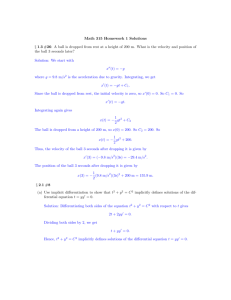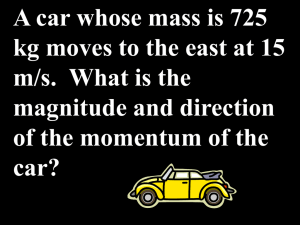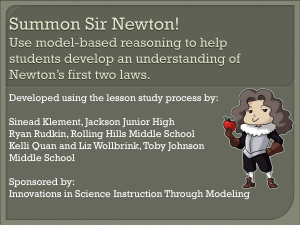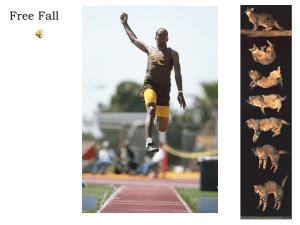m/s 2
advertisement
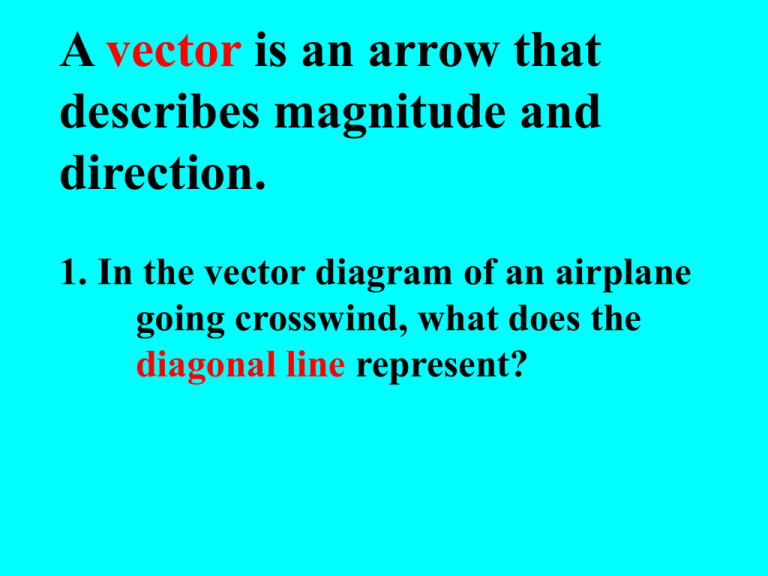
A vector is an arrow that describes magnitude and direction. 1. In the vector diagram of an airplane going crosswind, what does the diagonal line represent? Paul rolls a bowling ball across the table and then represents its velocity on the chalkboard with VECTORS. 2. Why are the vectors the same size? 3. If the bowling ball is dropped, how do the vectors compare? 4. What is the numerical value for g for the planet earth? 5. What does the formula v=gt represent? What units? 6. If a ball falls past a window at 50 m/s, how fast is it going 1 second later? 7. If a ball is dropped, what is the formula for how far it falls? 8. If a ball is dropped from the top of a cliff, how far will it fall in 1 sec? 2 seconds? In 10 seconds? Paul draws a vector diagram for a ball rolling off the edge of the table. Only the vertical component of motion changes: the horizontal part stays the same. 9. Which hits the ground first, a bullet dropped from a height, or a bullet fired simultaneously from the same height? Paul demonstrates the independence of horizontal and vertical motion with a device that shoots a ball horizontally. 10.If a baseball pitcher throws a ball horizontally from a tower 5 meters tall and the ball lands 25 meters downrange, at what speed was the ball thrown? ANSWERS: 1.The resulting direction and the velocity of the airplane. 2. Two vectors are the same size to represent constant velocity. 3. When the bowling ball is dropped the vectors increase in size to represent the increase in velocity as the ball falls. 4. The value of g is approximately 10 m/s/s. (m/s 2) 5. The formula v=gt is… velocity for a freefalling object where g is 10 m/s/s and t is time it takes to fall. The unit for speed is m/s. 6. 60m/s; it gains 10 m/s each second. 7. D = ½ gt2 8. Distance = ½ gt 2 (5)(1) = 5meters (5)(4) = 20 meters (5)(100)= 500 meters 9. A bullet shot and a bullet dropped will both hit the ground at the same time. 10. Speed= distance/time 25 m/s
